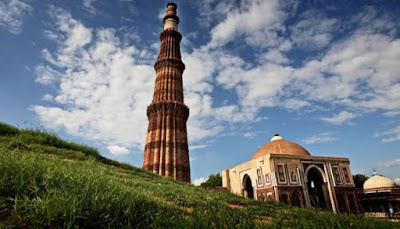1 : ATHENS-GREECE
ATHENS is the Capital and Largest city of GREECE..Athens is a Greek Word ...Athens dominates the Attica region and in 0ne of Oldest cities with its Recorded history over 3,400 years It has a large financial sector and its Port PIRAEUS is both the Largest Passenger Port in EUROPE
2: PETRA
Petra, the fabled "rose red city, half as old as time", is a well known ancient Nabataean city in the south of Jordan. Due to its breathtaking grandeur and fabulous ruins, Petra was recognized as a World Heritage Site by UNESCO in 1985.Petra was the impressive capital of the Nabataean kingdom from around the 6th century BC. The kingdom was absorbed into the Roman Empire in AD 106 and the Romans continued to expand the city. An important center for trade and commerce, Petra continued to flourish until a catastrophic earthquake destroyed buildings and crippled vital water management systems around AD 663. After Saladin's conquest of the Middle East in 1189, Petra was abandoned and the memory of it was lost to the West.
3: EGYPT
Egypt, is a transcontinental country spanning the northeast corner of Africa and southwest corner of Asia by a land Bridge formed by the Sinai Peninsula. Egypt is a Mediterranean country bordered by the Gaza Strip and Israel to the northeast, the Gulf of Aqabato the east, the Red Sea to the east and south, Sudan to the south, and Libya to the west. Across the Gulf of Aqaba lies Jordan, and across from the Sinai Peninsula lies Saudi-Arabia, although Jordan and Saudi Arabia do not share a land border with Egypt.Egypt has one of the longest Histories of any modern country, emerging as one of the world's first Nation state in the tenth millennium...
4: COLOSSEUM
The Colosseum also helps us decrypt the Roman society.
Everything about the colosseum is impressive, from the building’s dimensions to the gladiator stories! And Colosseum is not just a story! It is one of the most visited places in Rome, Italy.
5:Imperial-Baths-of-Trier
Going to the baths was an important part of Roman life: Over 1600 years ago, the Romans built one of the grandest and most impressive baths in the world: the Imperial Baths. Today you can visit this gigantic bathing facility: go back in time to the Roman era, descend into the subterranean labyrinth and get a feel for history!People bathed naked (not always separately), could engage in sports, sit in cold and hot baths, swim, get a massage, have the body hair removed by tweezers or wax, and be cleaned with the help of scrapers, pumice stone, or fermented urine. They could relax, gamble, do business, go to the hairdresser's, libraries, reciting rooms, or pubs.
When you enter the Imperial Baths you will first come to the hot water bath (large enough for present-day theater and opera performances complete with stage, orchestra, and 650 seats).
The incoming cold water was heated in altogether six boiler rooms, four of which are visible in the 62 ft high ruins which later served as a part of the medieval city wall. The 40° C/104° F hot water was then conducted into the three semicircular pools for the bathers.
A hollow-floor heating system heated the pool floors as well as the rectangular central part of the vaulted hall. You can descend from here into the underground service tunnels and then continue to the cold water bath. The sports grounds are located outside the enclosed facilities.
6: Parthenon-Acropolis
The Parthenon. It is the most important and characteristic monument of the ancient Greek civilization and still remains its international symbol. It was dedicated to Athena Parthenos (the Virgin), the patron goddess of Athens. It was built between 447 and 438 B.C. and its sculptural decoration was completed in 432 B.C. The construction of the monument was initiated by Perikles, the supervisor of the whole work was Pheidias, the famous Athenian sculptor, while Iktinos (or Ictinus) and Kallikrates (Callicrates) were the architects of the building. The temple is built in the Doric order and almost exclusively of Pentelic marble. It is peripteral, with eight columns on each of the narrow sides and seventeen columns on each of the long ones. The central part of the temple, called the cella, sheltered the famous chryselephantine cult statue of Athena, made by Pheidias.
7 : Charminar-hyderabad
Situated bang in the heart of the old city of Hyderabad, the Charminar (Urdu ‘Char’ meaning Four and ‘Minar’ meaning Tower) is one of the most recognized monuments in India. It is the architectural icon for the city of Hyderabad, equivalent to the likes of the Taj Mahal of Agra or the Eiffel Tower of Paris and is the most searched historical site of the city on Google. The imposing monument stands regally tall amidst the colorful bangle shops in the labyrinthine Laad Bazar of the old city and presents a beautiful glittering sight after nightfall (7pm-9pm). It is currently maintained by the Archeological Survey of India. The Charminar is situated on the eastern banks of Musi River with the Makka Masjid, another famous Qutub Shahi architecture, in the vicinity.8 : Maxres
Maxres is the best oldest fort about 3300 years ago... Maxres is located in the GREECE ....The fort is built in the Doric order and almost exclusively of Pentalic marble.. It is most historical place for Tourist...










No comments:
Post a Comment